20 Budget Activities You Can Do From Start to Finish for the Perfect Tokyo Solo Travel
Tokyo is one of the most talked-about cities. After all, it is the largest city in the world. Many solo travelers aim to take a Tokyo solo trip, but they quickly become overwhelmed with creating the best Tokyo solo travel itinerary.
Luckily, I lived in Japan and compiled the most useful information you need to have the perfect Tokyo solo trip. From where to stay, what to see, and how to stay safe in Tokyo, this comprehensive guide will help you spend less time researching and more time enjoying your Tokyo solo travel!
Love Japan? Read my Ultimate Japan Bucket List: The Best Thing to Do in Every Prefecture

This post may have affiliate links. I receive a small percentage if you book a hostel or attraction through my recommended links. This is at no extra cost to you and helps me reach my goal of becoming a full-time digital nomad.
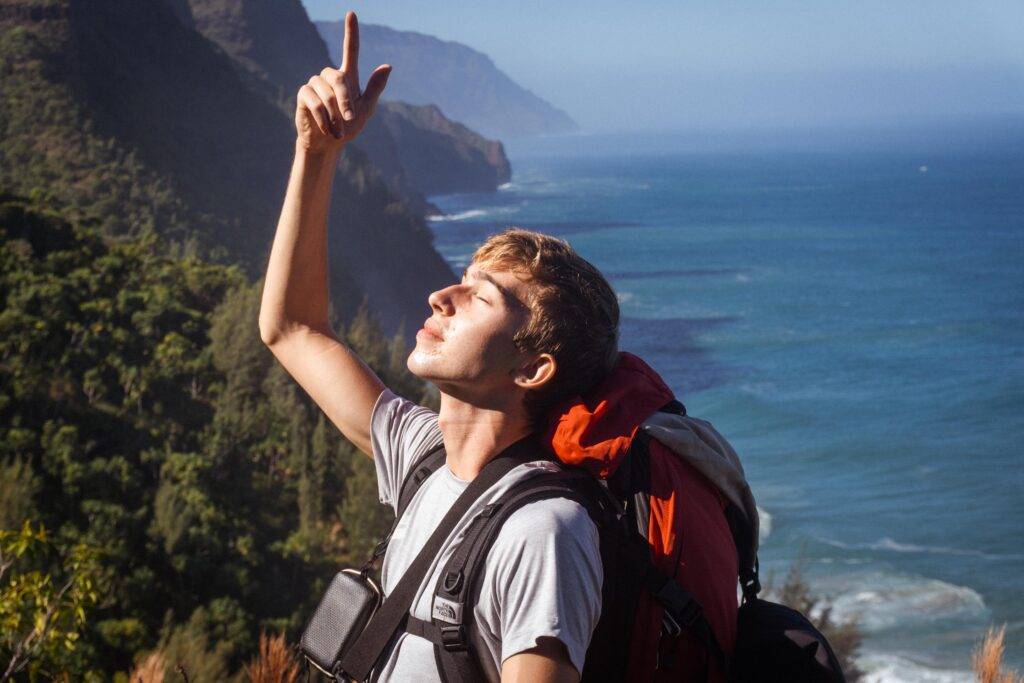
Hi, I am Noah takes the world. I love solo traveling. Planning a solo trip can be stressful with endless scrolling and searching.
My mission is to make your solo trip a reality.
Subscribe to my monthly newsletter—stunning photos and stories to guide your solo trip
This post may have affiliate links. I receive a small percentage if you book a hostel or attraction through my recommended links. This is at no extra cost to you and helps me reach my goal of becoming a full-time digital nomad.
Table of Contents
- Planning a Tokyo Solo Travel Itinerary Is Overwhelming
- Is It Safe To Travel to Tokyo?
- Where Should You Stay During Your Tokyo Solo Trip?
- How Do You Get Around Tokyo During Your Tokyo Solo Trip?
- When Should You Take Your Tokyo Solo Trip?
- 1. Start Your Tokyo Solo Trip at Ueno Park
- 2. Shop for Cheap Souvenirs at Ameyoko Shopping Street
- 3. Visit Sensoji in Asakusa When Alone in Tokyo
- 4. Relax at Sumida Park With a Great View of Tokyo Sky Tree
- 5. Walk across the Sakura-bashi Bridge to Tokyo Skytree
- 6. Take the Hanzomon Line From Skytree to the Imperial Palace
- 7. Walk to Tokyo Station and Experience One of Japan’s Most Prestigious Business Districts
- 8. Window Shop in Tokyo’s Luxurious High-End Shopping District
- 9. Walk Across the Busiest Pedestrian Crossing in the World: Shibuya Crossing
- 10. Make Your Way to Shinjuku to Admire the View From Shinjuku Southern Terrace
- 11. Go to Shinjuku Gyoen National Garden
- 12. Make Your Way to Harajuku and Shop Along the Trendy Takeshita Street
- 13. Pay Your Respects at Meiji Jingu, a Shrine Dedicated to a Significant Leader in Japan’s History
- 14. Run, People-Watch, or Sunbathe at Yoyogi Park
- 15. Take the Subway to Roppongi Hills, Known as a City Within a City
- 16. Wait for the Sun to Set by Exploring Zojo-Ji and Prince Shiba Park
- 17. Watch the Sunset On Top of Tokyo Tower and Stay Till Dark
- 18. End Your Day by the Sea at Takeshiba Pier
- How Much Money Do I Need for My Tokyo Solo Trip?
- Now, Make the Perfect 2-Day Tokyo Solo Travel Itinerary a Reality
Planning a Tokyo Solo Travel Itinerary Is Overwhelming
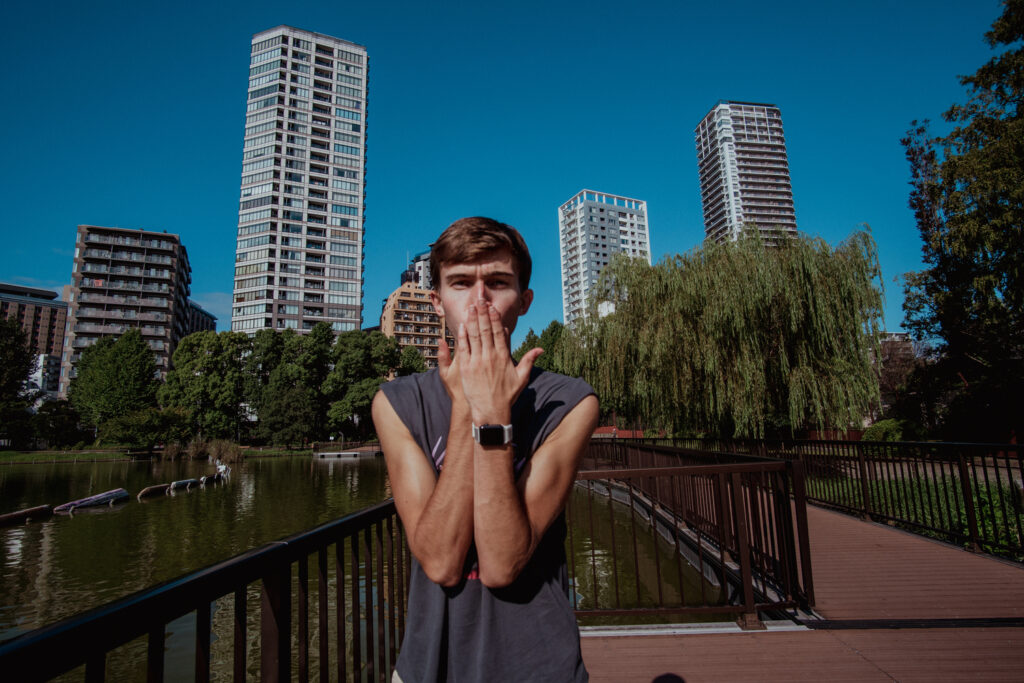
Tokyo’s sheer size and my limited travel time were both problems I faced when planning my solo Tokyo trip. I was an English teacher in Japan with limited funds and only had time to travel on the weekends.
Luckily, I completed 18 activities during my weekend in Tokyo, with a budget of only USD 100.
My Tokyo solo travel itinerary caters to budget solo travelers who want to see Tokyo’s famous attractions alongside hidden urban oases. Most of my activities are free or budget-conscious.
Is It Safe To Travel to Tokyo?
Tokyo is a very safe place to visit alone. Petty crimes are rare in Japan. Sometimes, if you leave your wallet on the train or in the park, it will stay there until you return to find it.
Of course, you should always be aware of your surroundings, especially when you are walking in Tokyo’s large crowds. I would recommend being extra cautious when walking around large entertainment districts at night, such as Shibuya or Shinjuku.
I always recommend that solo travelers purchase travel insurance before going on their trip. You never know when you will need it! (You could get food poisoning in Japan, like I did). Use the widget below to find the plan that best suits your needs.
Where Should You Stay During Your Tokyo Solo Trip?

After an exhausting day exploring Tokyo by yourself, you will need to rest. I recommend you try staying at a capsule hotel. Japan is known for its capsule hotels, so why not make your lodging a cultural experience?
Noah’s take: I stayed at Shinjuku Capsule Hotel during my Tokyo solo trip. It was not the cleanest or most elegant stay. It is an older hotel and only has a public bath. Women and men can both stay here in separate floors.
However, for less than $25 USD, there was little reason to complain, but if you capsule hotel with impressive amenties, stay at the Anshin Oyado. During your stay, you can enjoy an artificial onsen, sauna, and massage chairs, plus complimentary rice, miso soup, and drinks. However, this hotel is for men only.
Female solo travelers can stay at 9h nine hours woman Kanda. This capsule hotel is located in Akihabara near Kanda Station.
If you want to get the lowest price, I always use Agoda to book my accommodations in Japan. 90 percent of the time, it will have the lowest price.
How Do You Get Around Tokyo During Your Tokyo Solo Trip?
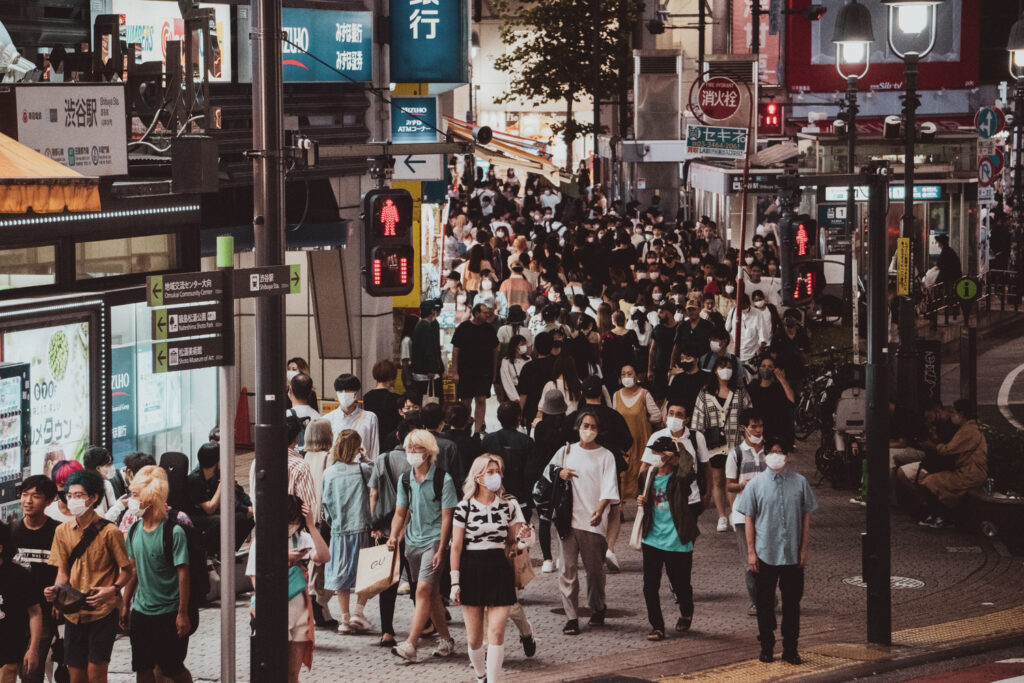
Tokyo’s subway system is notorious for being complicated, but if you know how to use Google Maps, you will be fine. If you do get lost, Japanese people are usually very happy to help.
To make traveling around Tokyo easier, try to use the Yamanote Line to get to your Tokyo solo activities. It is known as one of the most famous train lines in the world. This line is even more special because it is above ground! Meaning you will have some nice city views.
Noah’s take: Make your life easy and invest in a Suica IC Card, so you do not have to purchase a ticket each time you take a train. You can even add Suica to Apple Pay.
- With a Suica IC Card, you load money onto a card using the machines in the train stations and tap your card to enter the trains.
- It is super convenient. You can purchase a card at the station’s ticket machines. For more information on purchasing an IC card, read this guide by matcha.com.
If you plan to visit Tokyo and Kyoto, I recommend purchasing the JR Pass to travel nationwide. Without a rail pass, you will pay nearly 15,000 yen for a one-way trip between the cities.
Read: 16 Things to Do Alone in Kyoto | Kyoto Solo Trip Guide
If you purchase a JR Pass and visit Tokyo, Kyoto, and Hiroshima, it will be the most cost-effective way to travel by train. Also, you can use the JR Pass to take JR trains around Tokyo (including the Yamanote Line) for free.
When Should You Take Your Tokyo Solo Trip?
Most bloggers would recommend visiting Tokyo during cherry blossom season (typically Late March). However, I think Tokyo is too crowded during this season for solo travel. Also, most of my favorite cherry blossom spots aren’t near Tokyo.
READ: 8 Underrated Places To See Cherry Blossoms in Japan (2024)
Tokyo is the most populated city in the world, so you can always expect the city to be busy. However, I wouldn’t recommend visiting Tokyo around Japan’s national holiday weeks: Obon (Aug. 13 to Aug. 16) and Golden Week (April 29 to May 6). Everything will be extremely busy.
Also, I would not recommend visiting Tokyo from June to August. June is rainy, while the other months are humid and muggy. Therefore, I recommend visiting Tokyo anytime outside of cherry blossom season and the summer months.
1. Start Your Tokyo Solo Trip at Ueno Park
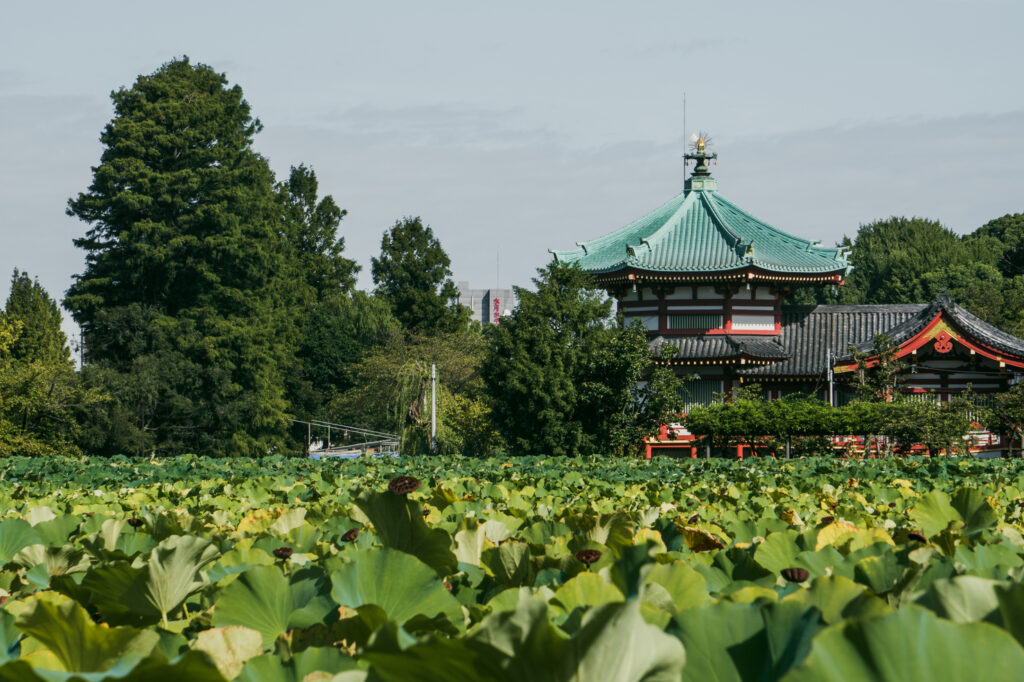
Ueno Park is a city park with museums and a zoo. It is one of the most peaceful things to do alone in Tokyo. This park is perfect for people-watching and brisk walking. However, if you visit Japan during cherry blossom season, the park will be bustling with food vendors and pedestrians.
- The park grounds were originally part of Kaneiji Temple, which used to be one of the city’s largest and wealthiest temples of the ruling Tokugawa clan during the Edo Period.
My favorite spot in the park is the Shinobazu Pond Bentendo. It is a temple hall in the middle of a pond dedicated to the goddess of good fortune, wealth, music, and knowledge.
Noah’s take: You don’t need to spend too long in the park. It is a nice place to eat a rice ball and escape the crowds.
2. Shop for Cheap Souvenirs at Ameyoko Shopping Street
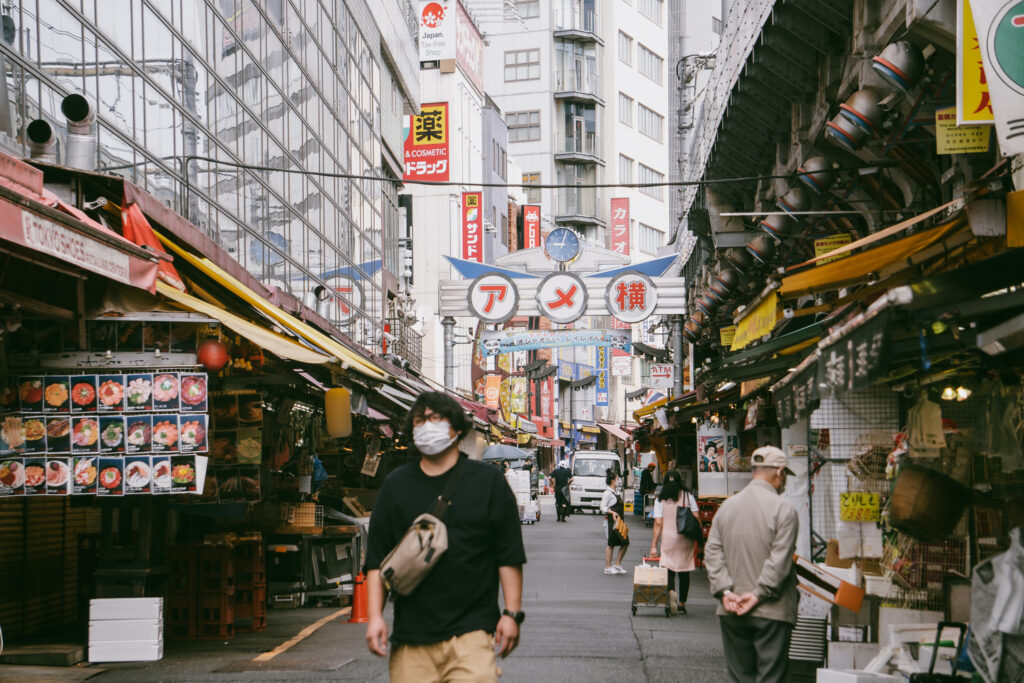
After enjoying time at an urban park, walk 10 minutes from Shinobazu Pond to Ameyoko Shopping Street. Ameyoko is a busy market where you can find food and souvenirs at an affordable price.
- Ameyoko is nicknamed after America because this was the black market area for American goods after World War II.
Noah’s take: I love visiting traditional markets when I solo travel. You can taste authentic food and get cheaper, more eclectic goods.
However, most stores open around 10:00 a.m. If you have an early start to your day, you might visit the market before it opens.
3. Visit Sensoji in Asakusa When Alone in Tokyo
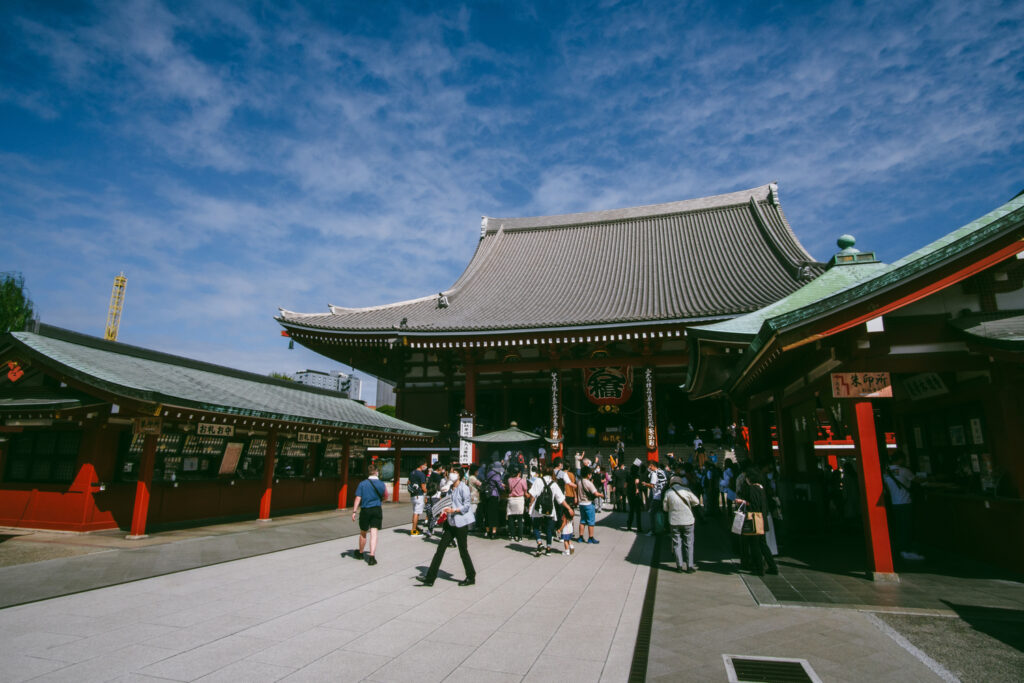
Next, walk 4 minutes to Ueno-Hirokoji Station and take the Ginza line to Asakusa Station for 180 Yen.
After making it to Asakusa Station, walk up the Nakamise Shopping Street to reach Sensoji’s main hall and pagoda. This street is busy, full of shops selling souvenirs and snacks.
Make sure to give an offering at Asakusa Shrine. It might be a little intimidating to give an offering. I have visited many different shrines in Japan, and it seems like everyone does something different when giving an offering.
How to Give an Offering at a Shrine
Try to observe and follow what others are doing. You will wait in line, gently throw a coin in the donation box, and then bow. However, every shrine has a different meaning and purpose. Some bring luck, good health, and even romance.
Some worshippers will throw their coins, bow twice, clap their hands twice, pray for a few seconds, and bow again. However, it can be hard to remember those steps. It is a little stressful to do so!
Noah’s take: No one will be upset with you if you forget to clap or bow an extra time. Do not let fear stop you from experiencing a very insightful cultural experience. Just be respectful!
4. Relax at Sumida Park With a Great View of Tokyo Sky Tree
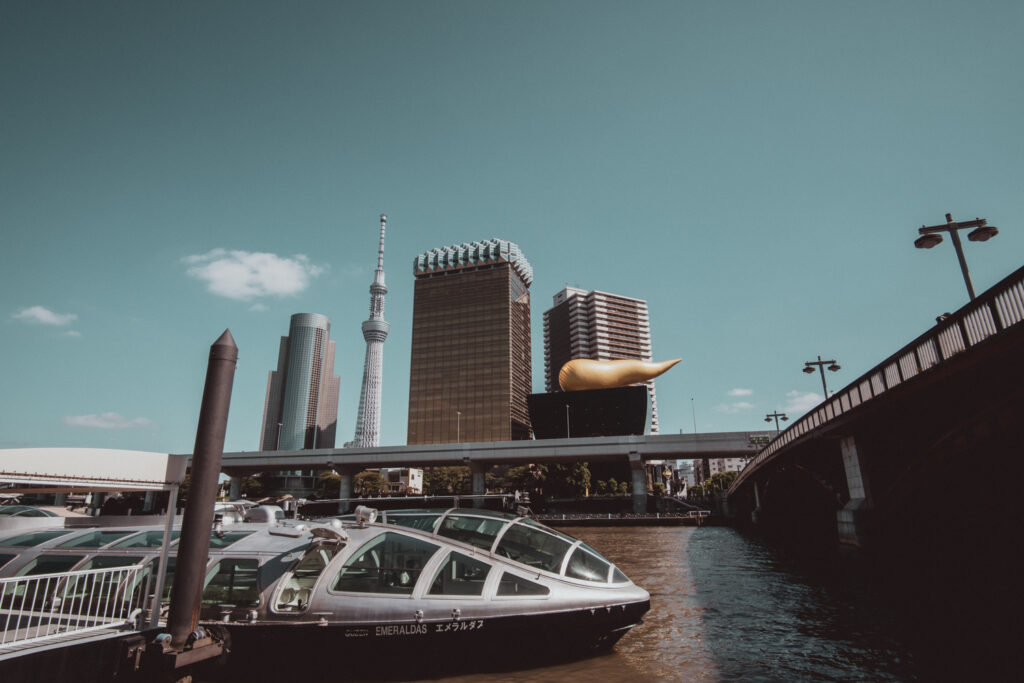
In less than 5 minutes, walk from Sensoji to Sumida Park. This park is a very popular cherry blossom spot that provides some relaxation from the busy streets of Asakusa and great views of Tokyo Sky Tree.
Noah’s take: This park does not have much green space, but it feels like an oasis because it is set against the Sumida River. You can never go wrong when visiting a park alone in Tokyo!
5. Walk across the Sakura-bashi Bridge to Tokyo Skytree
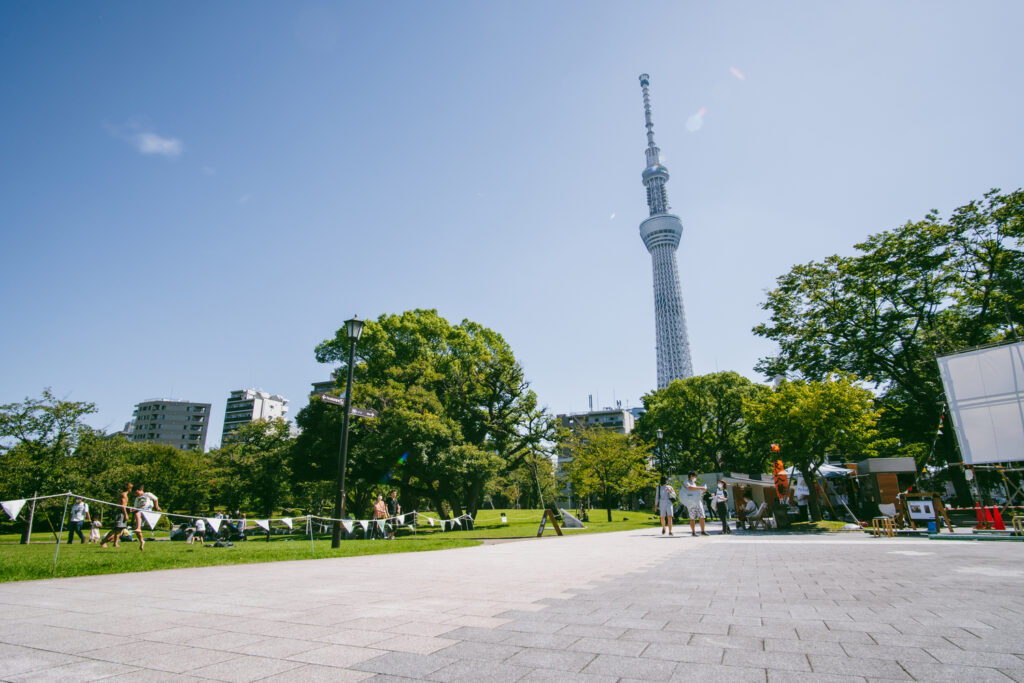
If you feel like walking, you can easily walk to Tokyo Skytree from Sumida Park in 15 minutes. If you don’t feel like walking, you can take the Tobu Skytree Line from Asakusa Station (710 Yen) or the Asakusa Line (180 Yen).
Noah’s take: It is a nice Tokyo solo activity to walk from Sumida Park to Tokyo Skytree. You can see cafes and shops that sit underneath massive train tracks.
- Tokyo Skytree is a very famous observation deck in Tokyo. It is the tallest structure in Japan and was the second-tallest in the world at the time of its completion.
Is Tokyo Skytree Worth Going Up?
You can go up the tower, but it is expensive and not one of the most enjoyable things to do alone in Tokyo. You will drop at least $20 USD and crowd with many tourists.
And if you are following this itinerary in order, you will reach the Skytree midday.
Noah’s take: There is nothing more disappointing than visiting an observation around noon. The sun angle is not ideal for pictures. I try to visit observation decks near sunset or at night. The view and your pictures will be much more impressive.
It might seem silly to visit Skytree without going up the tower. However, it is a great place to grab lunch. There is a massive outdoor food court at the base of the tower.
I enjoyed admiring Skytree from the ground and walking from Sumida Park. If you have extra time and extra cash, go up the tower. However, Skytree is just one of Tokyo’s many observation towers.
Keep reading because I visited a different tower during sunset, which is cheaper. If you have more time in Tokyo than I did, you should visit Tokyo Skytree during sunset. However, if you are short on time, keep reading about which tower to visit.
6. Take the Hanzomon Line From Skytree to the Imperial Palace
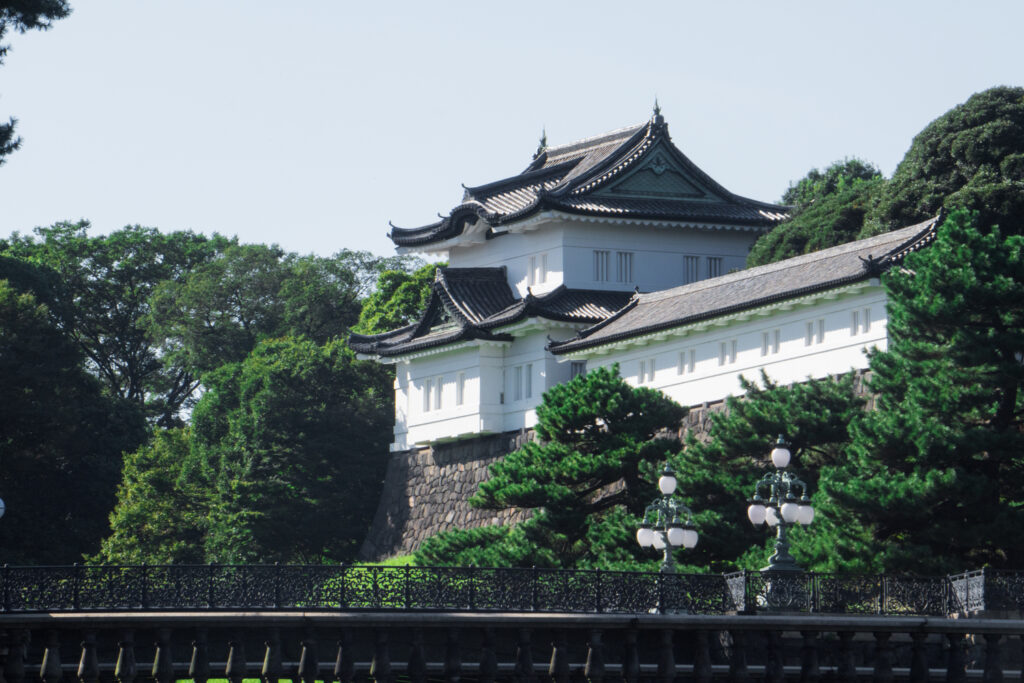
After grabbing some food and appreciating marvelous engineering, take the Hanzomon Line from Oshiage Station to Otemachi Station for 210 Yen.
- Otemachi Station is conveniently located near the Imperial Palace, the main home of the Imperial Family.
Noah’s take: During my Tokyo solo travels, I had to visit the Imperial Palace because of its cultural significance. Although there is not too much to see here, since most of the palace is closed to the public, it is still a nice area to explore.
Make sure to walk through the Kokyo Gaien National Garden, a large plaza in front of the Imperial Palace, and take pictures of the Nijubashi Bridge.
7. Walk to Tokyo Station and Experience One of Japan’s Most Prestigious Business Districts
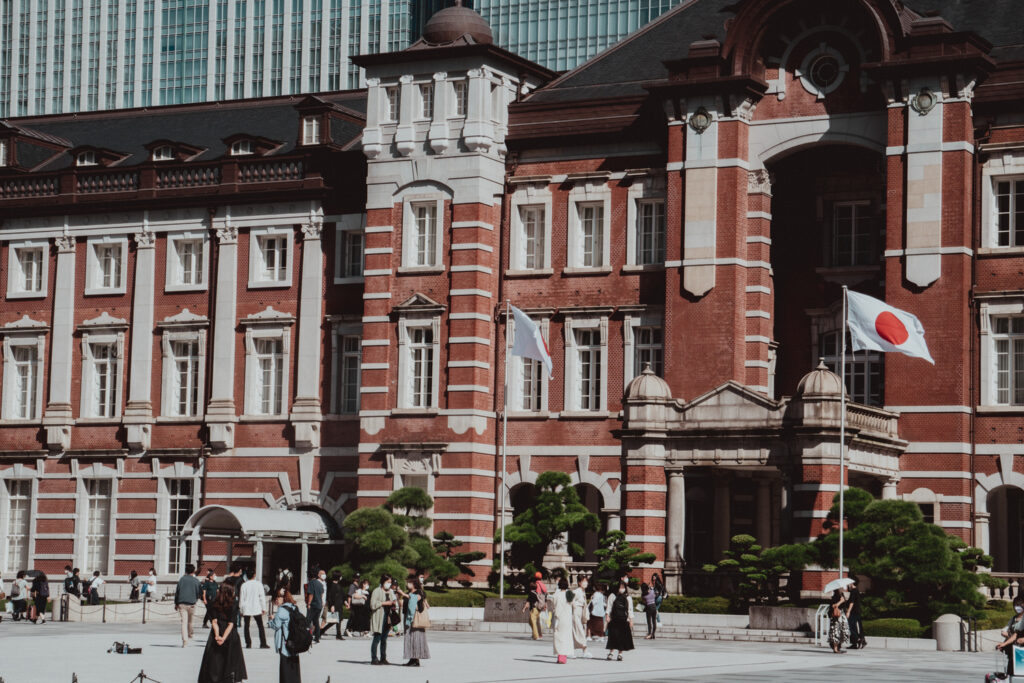
Between the Imperial Palace and Tokyo Station is Marunouchi, home to new shopping and dining facilities. You can experience Tokyo like a local in this area. Watch pedestrians enter Tokyo Station or enjoy shopping in gorgeous high-rises.
Noah’s take: During my solo travels, I like to experience a city and not just see it from a tourist perspective. Seeing Tokyo Station at rush hour is one of the most insightful things to do alone in Tokyo.
8. Window Shop in Tokyo’s Luxurious High-End Shopping District
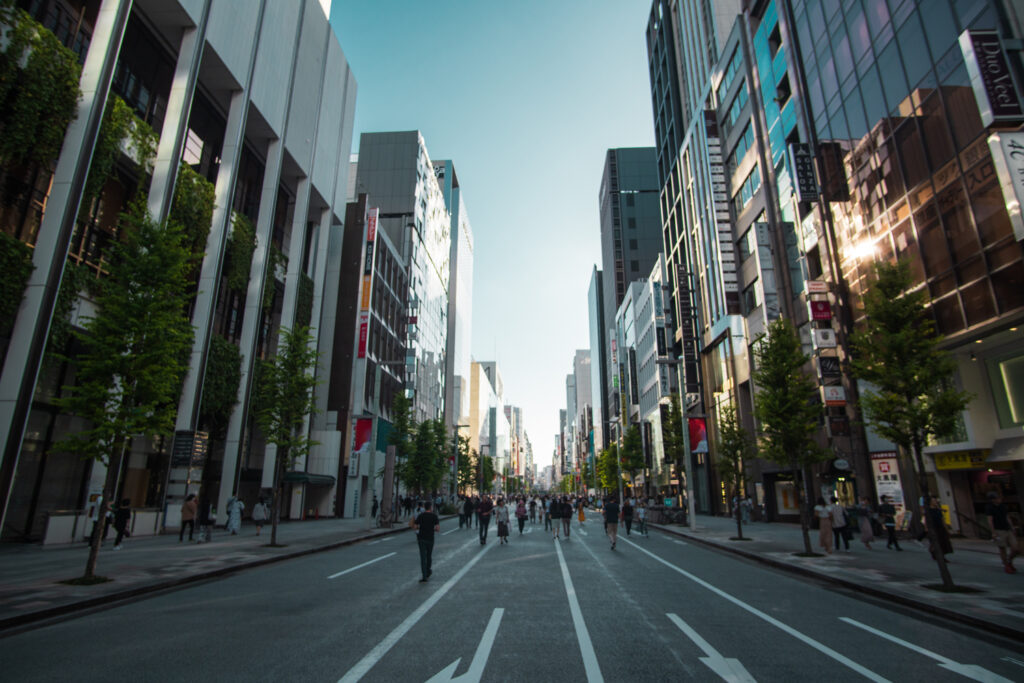
If the upscale Marunouchi is not luxurious enough for you, walk 20 minutes to Ginza, Japan’s most famous upmarket shopping district.
There aren’t too many shops that a budget traveler can afford here in Ginza. Luxury shopping is not one of the most economical things to do alone in Tokyo. However, walking Chuo-dori Avenue, the main shopping street in Ginza, is fun.
It is especially nice to visit on Saturday and Sunday afternoons when the street closes to cars, so shoppers have more room to walk and shop.
9. Walk Across the Busiest Pedestrian Crossing in the World: Shibuya Crossing

If you are following these solo activities in order, the sun should be starting to set, and night is coming. There is no better way to experience the transition from day to night than at the world’s busiest street crossing.
Shibuya Crossing or Shibuya Scramble is a must-see attraction, if it even counts as an attraction. Who knew a street crossing could be so exciting and thrilling?
From Ginza Station, take the Ginza line (210 Yen). When you arrive at Shibuya Station, head for the Hachiko Exit. You can take in a great view of the crossing at the bridge that connects the Shibuya Mark City Shopping Center with Shibuya Station’s Toyoko Store; just get out of the way of many pedestrians onto their next train.
Although taking a bird’s-eye shot of thousands of people crossing the scramble is memorable, the best feeling is experiencing it.

Noah’s take: Walking the crossing at dusk is an indescribable feeling—a highlight of my Tokyo solo travels. I was filled with so much adrenaline.
Besides crossing the infamous street, make sure to visit the Hachikō Statue. It commemorates a loyal dog who used to wait for his owner to come home from work each day outside of the station.
- After the owner died at work, Hachikō would return to the station every day for the next nine years, waiting for his owner to return.
10. Make Your Way to Shinjuku to Admire the View From Shinjuku Southern Terrace
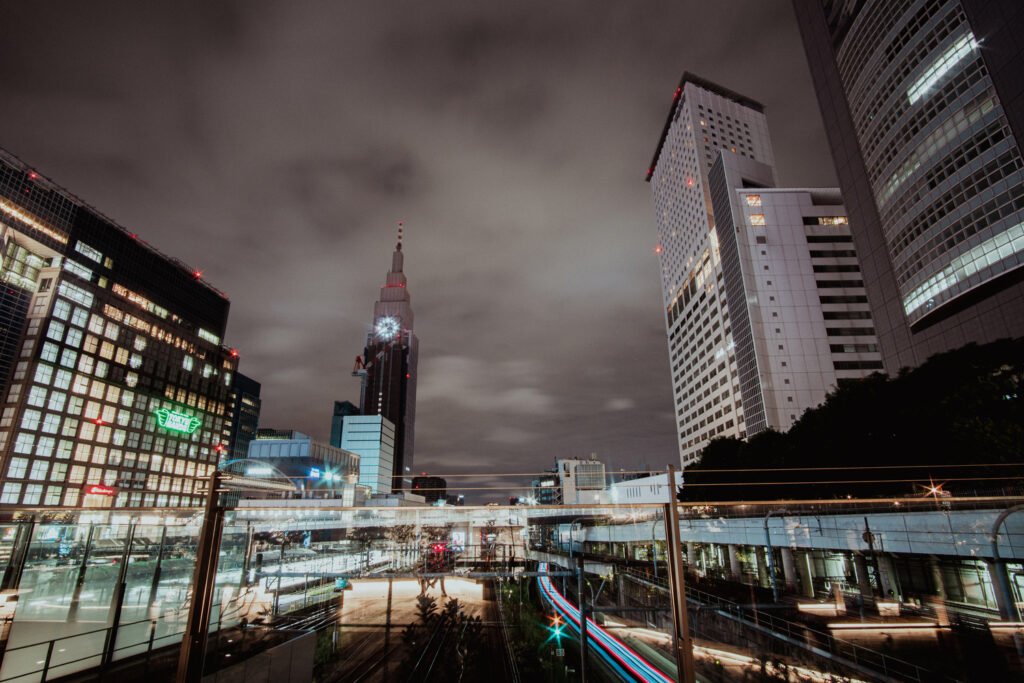
With its trendy shopping and bustling nightlife, you could easily spend your night in Shibuya. However, take one more train to another large entertainment and business center, Shinjuku.
- Take the Yamanote Line from Shibuya Station to reach Shinjuku Station (170 Yen).
Shinjuku and Shibuya are like sisters. Both districts have great shopping, sightseeing, and nightlife. They are arguably the most desirable and fun districts in Tokyo.
I prefer ending my night in Shinjuku because of the Shinjuku Southern Terrace, a resting spot on the south exit of Shinjuku Station. It is fairly quiet, and there is plenty of space to admire Shinjuku’s skyline.
Noah’s take: I was overwhelmed in the streets of Shibuya. The Shinjuku Southern Terrace was the perfect place to recenter and grab a meal to eat alone. Shinjuku is also where you find many hotels and hostels.
11. Go to Shinjuku Gyoen National Garden
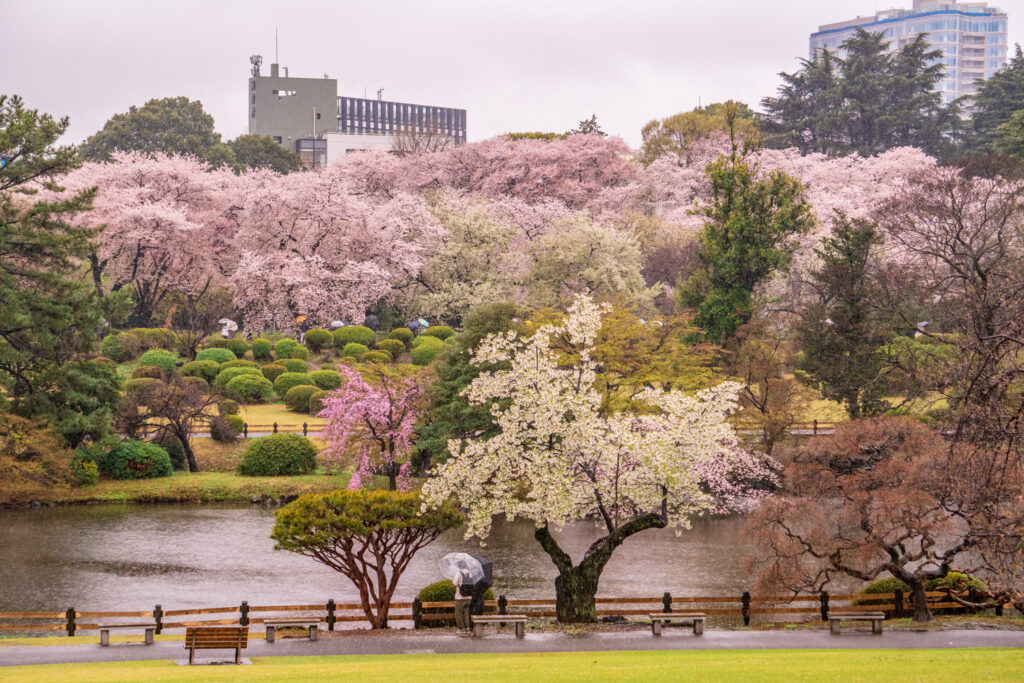
Solo trips and scenic gardens are the perfect combination. Walk ten minutes from Shinjuku Station by taking the New South Exit, and you will reach the Shinjuku Gate of the garden.
Shinjuku Gyoen is one of Tokyo’s largest and most popular parks. Come to the park when it opens at 9 a.m. and pay 500 Yen for a peaceful stroll. However, the park is closed every Monday or the following day if Monday is a national holiday.
- If you visit Japan during cherry blossom season, you will find this park is one of Tokyo’s most popular viewing areas.
12. Make Your Way to Harajuku and Shop Along the Trendy Takeshita Street
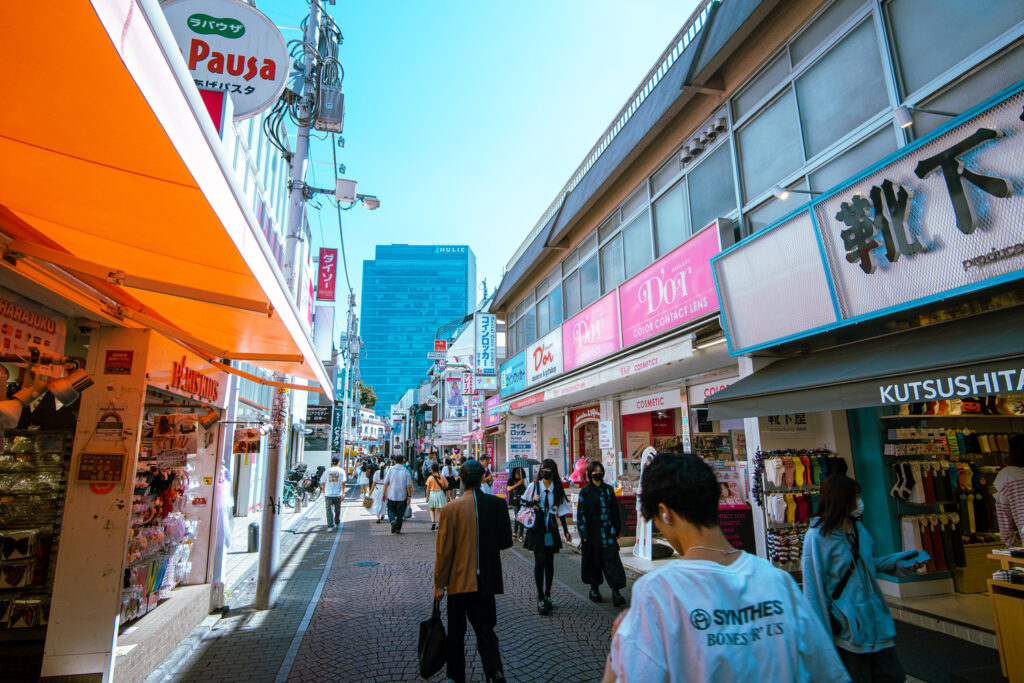
Harajuku sits between Shinjuku and Shibuya, a bit more teen-centered than the other two. Harajuku is known for its shopping and its very touristy Takeshita Street.
Take the Yamanote Line from Shinjuku Station to Harajuku Station (150 Yen) for a mere 4-minute train ride. Steps away from Harajuku Station lies the entrance to Takeshita Street.
Indulge in candied strawberries, crepes, and cotton candy, or shop in eccentric boutiques and second-hand stores.
Noah’s take: It is a cool place to see the birthplace of the Harajuku clothing style, but it is a very narrow street and can get crowded. So, it is not always one of the most ideal things to do alone in Tokyo.
If you want to escape the crowds and relax, go to the sixth floor of the Tokyu Plaza Omotesando Harajuku. There is a Starbucks and a beautiful outdoor terrace. It is a nice spot to recharge and use a free restroom.
13. Pay Your Respects at Meiji Jingu, a Shrine Dedicated to a Significant Leader in Japan’s History
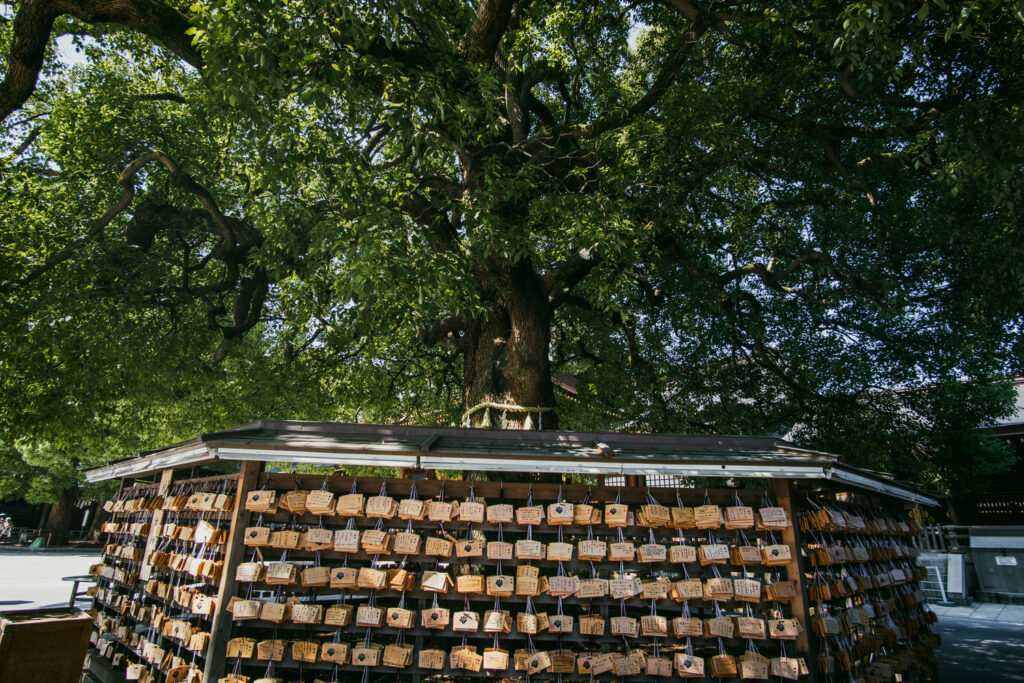
While Harajuku is known for its fashion, it is also home to a very important cultural property, the Meiji Shrine. It is also conveniently located right next to Harajuku Station.
Meiji Shrine is dedicated to the deity of Emperor Meiji, the first emperor of modern Japan. Emperor Meiji modernized Japan by having Japan join the World’s major powers. The Japan we know and love today stems from Emperor Meiji’s decision to connect Japan to the modern world.
What Not to Do at a Japanese Shrine?
You will walk about 10 minutes from the entrance near Harajuku Station to reach the main shrine complex. To first enter the shrine, you will pass a large gate called a torii. Make sure to stop and bow. Then, you can continue walking.
It is a very peaceful walk to the main shrine, where groves of large trees shade you. It definitely feels like a sacred space.
Make sure to walk on the sides of the path, not in the middle. The Gods pass in the middle, so walking along the Gods’ path is considered disrespectful.
Noah’s take: It can be overwhelming to remember proper customs while visiting a shrine, but once you understand the customs, your visit to the shrine becomes more significant. If you have extra time, read this helpful guide about visiting shrines.
14. Run, People-Watch, or Sunbathe at Yoyogi Park
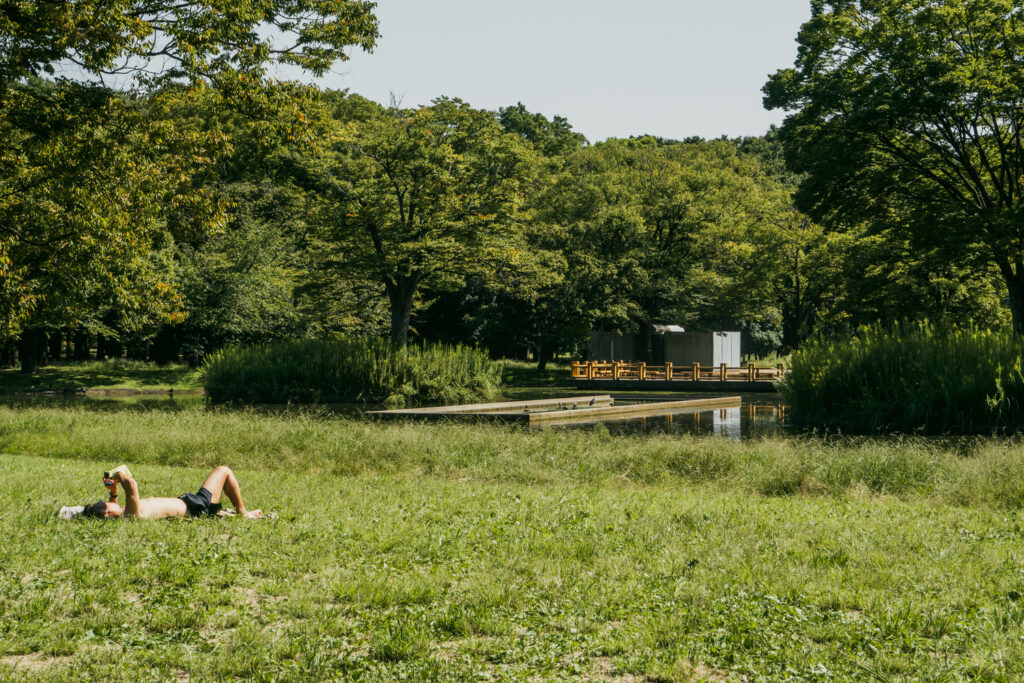
On the opposite side of Meiji Shrine sits Yoyogi Park. It is a large park that features ponds and skyline views.
Yoyogi Park is one of Tokyo’s largest city parks, featuring wide lawns, ponds, and forested areas. I enjoy visiting parks during my solo trips because I get a chance to peer into the everyday life of locals.
Here you can picnic or relax in the sun. You are sure to escape fellow tourists in this green space, making it one of my favorite things to do alone in Tokyo.
15. Take the Subway to Roppongi Hills, Known as a City Within a City
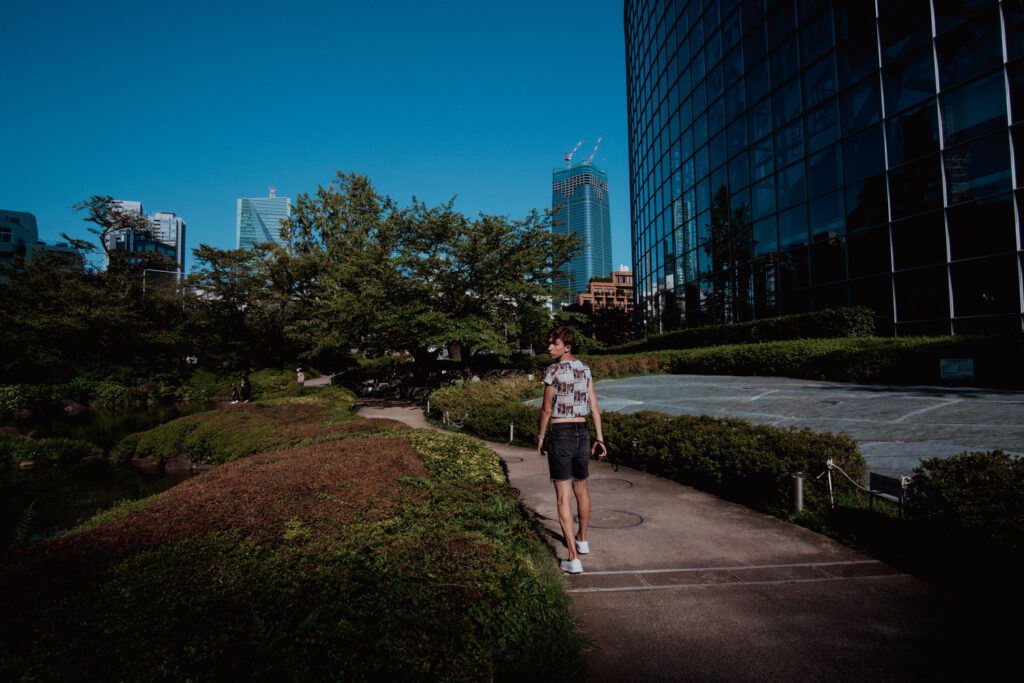
From Yoyogi Park, walk 5 minutes to the Yoyogi-Koen station. Take the Chiyoda Line to Nogizaka Station (180 Yen).
- After a 10-minute walk, you will find the futuristic Roppongi Hills. Here, you will find upscale eateries and many places to shop.
Make sure to see Maman, a spider sculpture that greets pedestrians as they walk through the district. Although there is an observatory in Roppongi Hills, you can have a nice free view of Tokyo Tower near Maman.
After viewing Maman, go to the ground floor and walk through Mori Garden, a traditional garden surrounded by shiny new buildings.
Noah’s take: If sunset is approaching soon and you are running out of time, you can skip visiting this city complex. However, it is still an interesting spot to explore on a Tokyo solo trip!
16. Wait for the Sun to Set by Exploring Zojo-Ji and Prince Shiba Park

Now, the sun should be close to setting. You want to reach the world’s tallest steel tower, Tokyo Tower. The tower, built using the Eiffel Tower as its model, symbolizes Tokyo’s growth following World War II.
When the sun shines with a golden ray during golden hour, first appreciate the tower on the ground. Once the sky turns pink and orange, head up to the Tokyo Tower.
- If you have time to kill before sunset, at the base of the Tokyo Tower, explore Zojo-ji, an impressive Buddhist temple. Also, you can visit Japan’s oldest public park, Prince Shiba Park.
Noah’s take: Prince Shiba Park has a wide-open lawn overlooking the tower. It is a great photo spot.
17. Watch the Sunset On Top of Tokyo Tower and Stay Till Dark
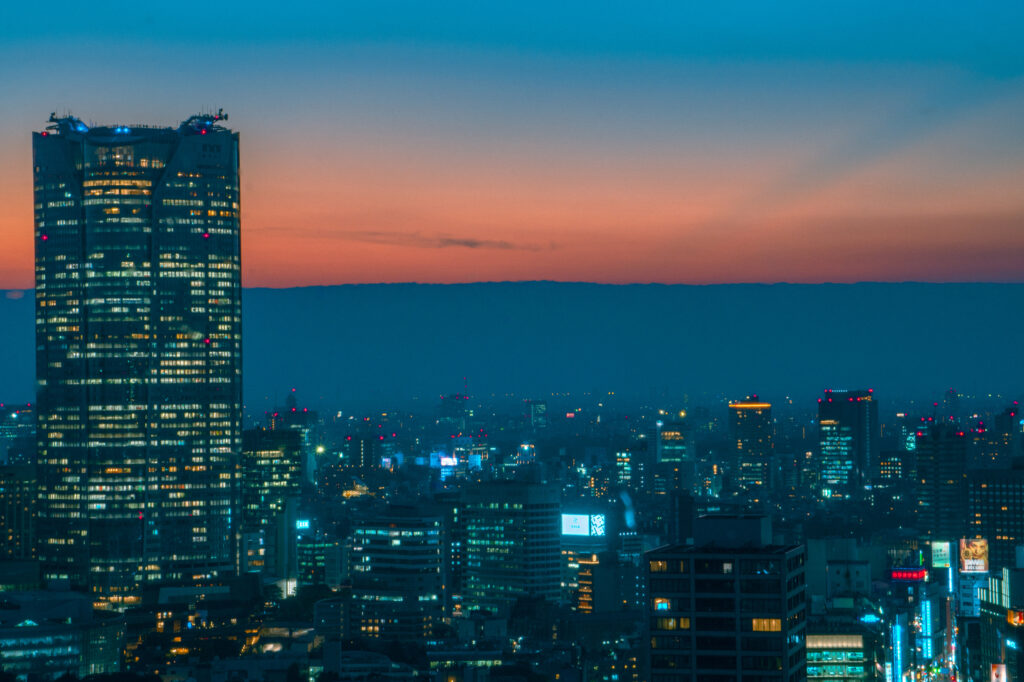
Once the sun sets, it is time to head up to Tokyo Tower. I visited on a weekday and did not have to wait to go up the tower.
Noah’s take: I recommend going to the tower before sunset and buying a ticket. If there is no waiting time, explore Zojo-ji and Prince Shiba Park, and then go back to the tower and redeem your tickets during sunset. Better yet, buy your tickets online ahead of time!
Is the Tokyo Tower Top Deck Tour Worth It?
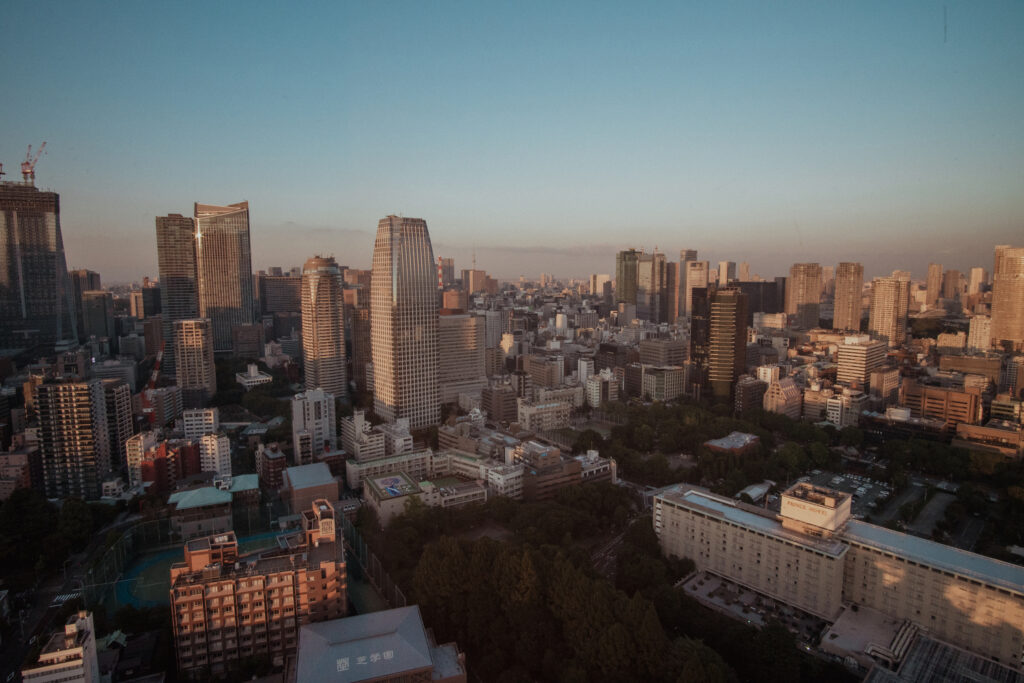
You have two options for touring Tokyo Tower. You can spend 1,500 Yen and simply go to the main observatory in the middle of the tower, or you can spend 3,500 Yen for a guided tour that goes to the main and top decks.
Noah’s take: Sometimes, I prefer views that are not extremely high because you can see buildings in better detail. High viewpoints are epic, but you can lose appreciation of landmarks in your view since they are so small and hard to make out.
Since this is a fast-paced, budget trip, I recommend staying cheap and going to the main observatory. It is a great bird’s-eye view where you can admire Tokyo in detail.
Noah’s take: I was obsessed with the view from the main observatory. Watching the sun slip behind mountains while an entire metropolis began to light up was one of my favorite activities during my solo trip. You won’t be disappointed with the middle observatory.
- I was also so lucky because I set up my tripod and got some amazing skyline shots without getting in trouble. Usually, you are not allowed to operate tripods on congested observation decks.
Once you have watched the sunset and stayed long enough for the city to light up, you can head back down 333 meters. You can take an elevator down, but take the stairs if you want a thrilling experience.
Noah’s take: The stairs are open-air, so you feel super connected to the city while you race down them. You can also peer through gaps in the stairs’ fencing for epic views.
18. End Your Day by the Sea at Takeshiba Pier
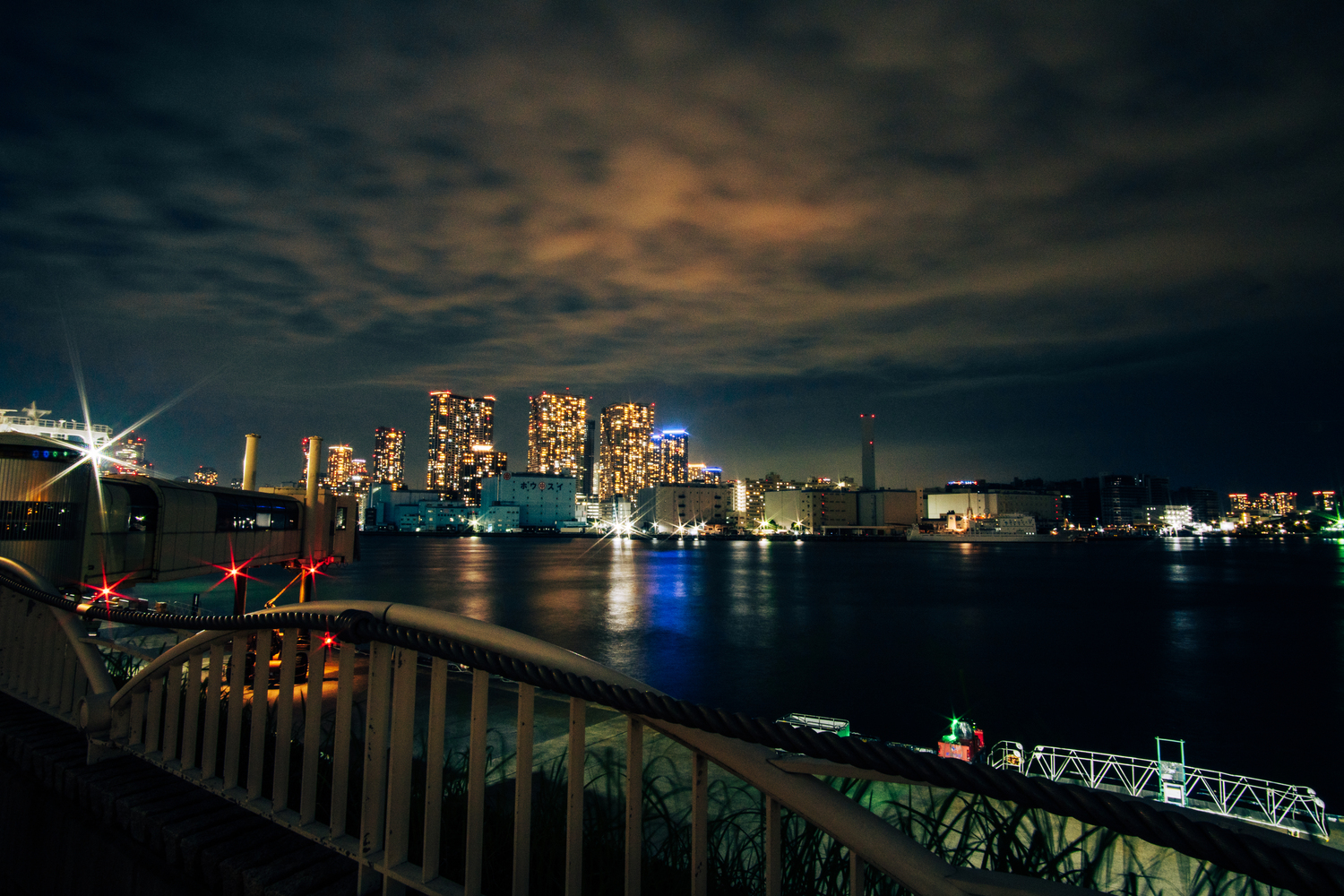
If the views from Tokyo Tower are not enough and you are waiting for your overnight bus, like I was, walk 30 minutes to the Takeshiba Pier.
I am sure you will be exhausted on your walk. If you have extra spending money, you can take a taxi. Since I am a budget solo traveler, I have a rule never to take a taxi. Taxis are expensive, especially when you are the only passenger.
You will find offices, hotels, and restaurants near the pier, and you can watch massive ships load cargo onto their decks. It is quite impressive to watch a ship being loaded.
Noah’s take: This pier is just a nice space to feel the power of solo traveling. The ocean breeze against your face while admiring bridges and buildings reflecting in the water is indescribable.
After you admire the sea, you can walk to the Tokyo Metropolitan Industrial Trade Center in a few minutes. They have plenty of terraces where you can sit outside, eat convenience store food, and rest from a rewarding solo trip.
How Much Money Do I Need for My Tokyo Solo Trip?

Since many of the activities on this itinerary are free, you really don’t need very much cash. I opted to eat my meals at convenience stores, which helped me save.
Noah’s take: You might think it is insane to eat convenience store food. However, convenience stores in Japan are world-famous for having great food selections. If you want to save even more, find supermarkets and eat food from their bento sections. They are also still very delicious.
Here’s how much I spent during my trip:
- Attractions: 2,000 Yen
- Transportation: 1,500 Yen
- Food: 3,000 Yen
- Shopping: 2,000 Yen
- Accommodation: 2,500 Yen
I spent 11,000 Yen, roughly $100 USD, during my 2-day Tokyo solo trip. So, you can cover a wide area of Tokyo for less than $100 USD. *Currently, the Dollar is very strong against the Yen. 11,000 yen is only $70!
Now, Make the Perfect 2-Day Tokyo Solo Travel Itinerary a Reality
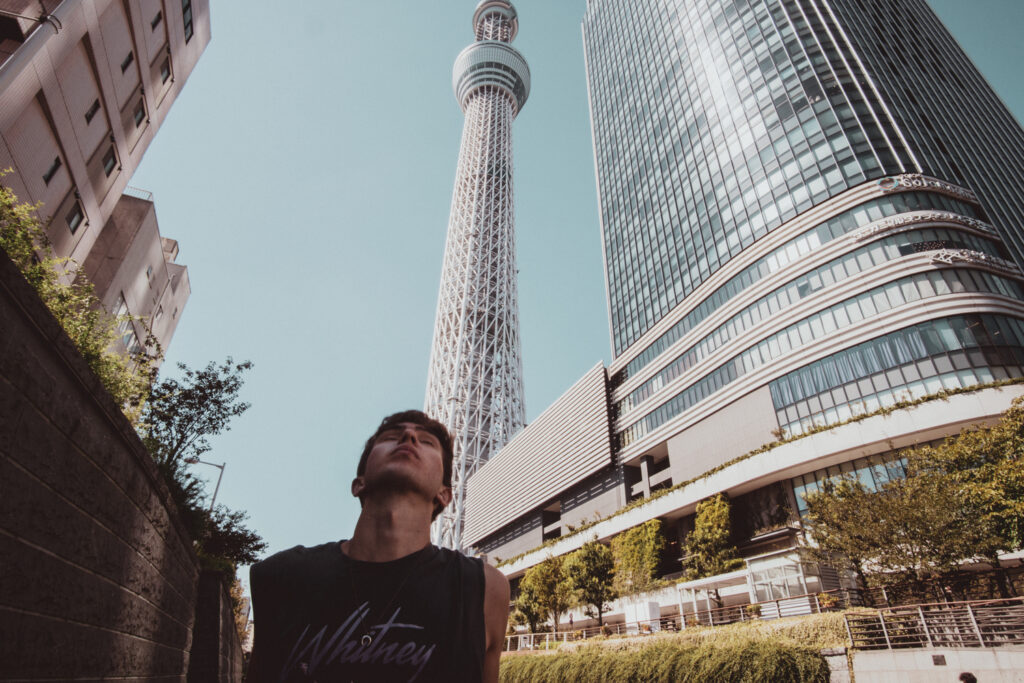
Of course, there is no such thing as a perfect itinerary. Places unexpectedly close. Waves of tiredness stop us in our tracks.
However, use this itinerary to guide your budget Tokyo solo travel, and I guarantee this will be a solo trip you will never forget.
Also, since you did not spend too much on this trip, this is definitely the beginning of your solo traveling. I will be here to guide your next trip.
Visiting Japan? Read: The five best hostels for solo travelers and How to Stay at a Manga Cafe (Internet Cafe) in Japan